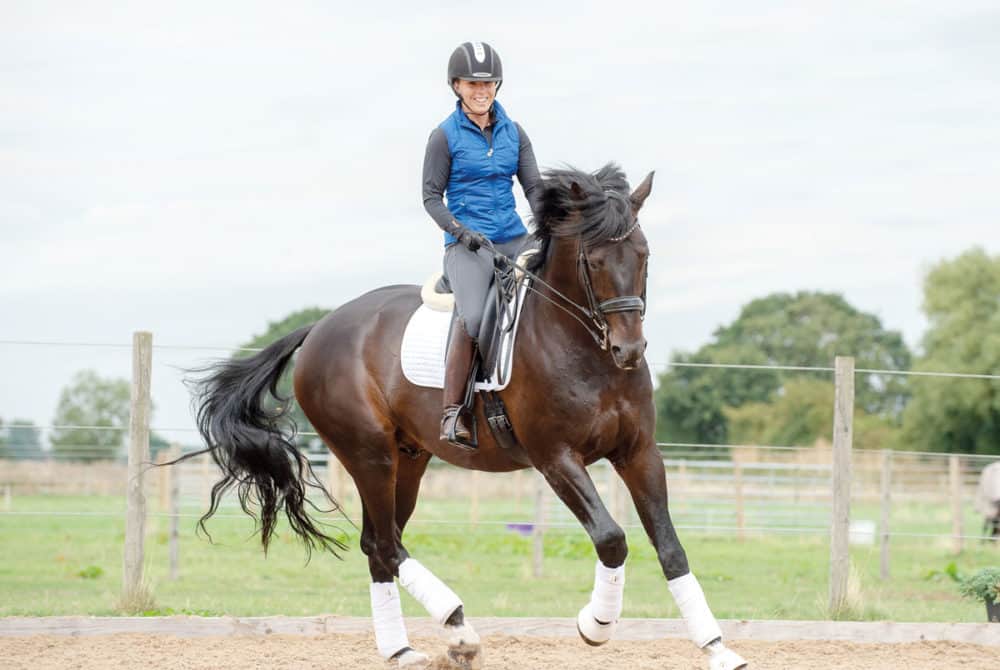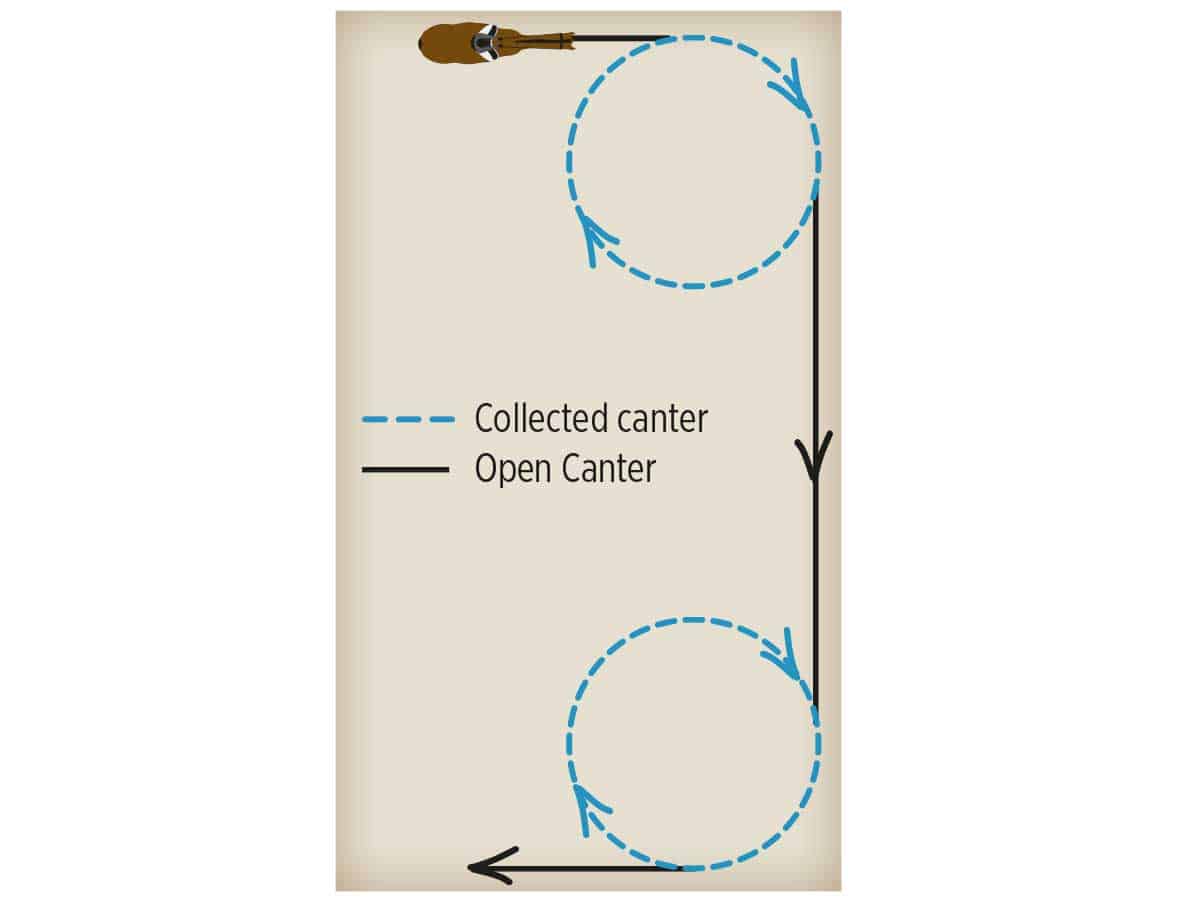Get an engaged horse with Sophie Wells
Posted 11th October 2019
Find out how circles can help you create an engaged horse with Paralympian Sophie Wells’ great exercises for improving collection

What does collection mean to you, and how do you achieve that elusive short stride and a round, uphill carriage? If your instinctive reaction is to close your hand and use a blocking aid with your reins, then certainly you’re not alone – many riders fall into the trap of using the kick-and-pull method to ask for extension and collection. But there’s definitely a better way.
Extension and collection are both rooted in one concept – engagement. An engaged horse steps well underneath himself with his hindlegs, rotating his pelvis so his hindquarters appear to drop and curl beneath him, while his back and shoulders – and, in turn, his neck – lift and round. While it’s possible to fake this picture with a heavy rein aid, you’ll run into trouble when attempting more difficult movements. Instead, it really pays to take the time to teach your horse to engage himself naturally.
Exercise: Forward and back
In this exercise you’ll be going from a smaller, collected canter into a much bigger, powerful one. The key is that you won’t be relying on your reins to pull your horse back and shorten him.

How to ride it: Establish canter, then as you leave the short side ride a 10m circle, allowing it to collect your horse’s stride. Your inside leg acts as a stabiliser to stop him from falling in, while your outside leg and rein ask for the turn. Keep your inside rein quiet – your inside leg does the job of asking for a slight bend through his body. As you ride out of the circle onto the long side, your inside leg aids will encourage your horse to step underneath himself with his inside hindleg and push for a more open stride down the long side. Finally, just before the next short side, ride another 10m circle. Ride a half-halt before the circle to help him collect, but even if your horse doesn’t shorten his stride, ride the circle anyway. This will help him learn for himself what your aids were asking for and also how to adjust his body to balance on a relatively small circle.
What it does: The first circle helps create engagement, which is essential for achieving the bigger strides of medium canter down the long side. It will also teach your horse to adjust himself and you to stop overusing your rein aids. The first couple of times you ride it, it won’t be pretty, but repetition is key. It’s an excellent way to establish the basics if your horse is inexperienced, or to fill in any holes if he’s more advanced.
For more top exercises from Sophie Wells, pick up a copy of December Horse&Rider, on sale 17 October.










